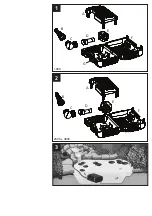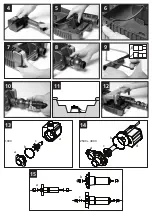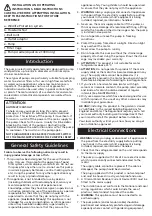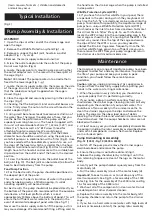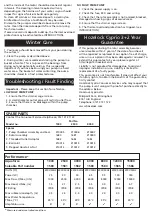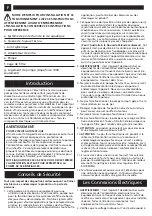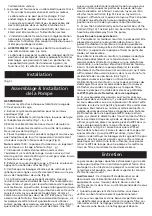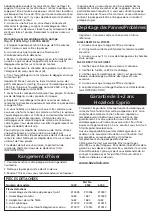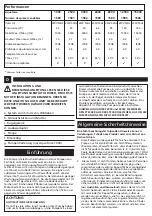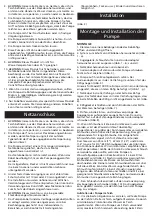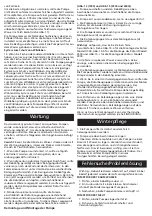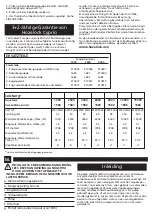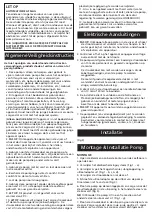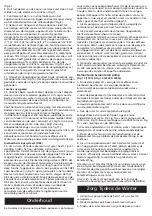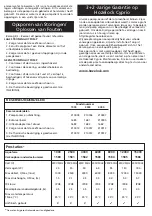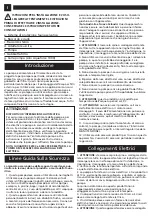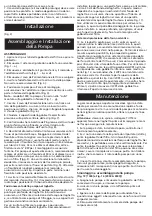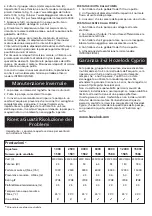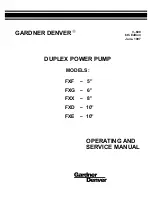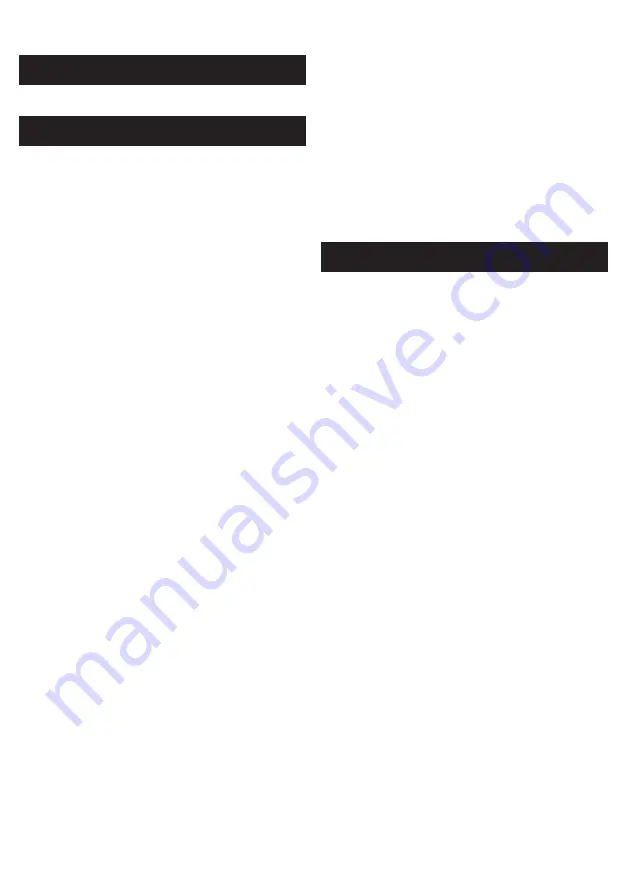
(lawn mowers, forks etc..) children and domestic
animals may occur.
(Fig 3)
ASSEMBLY
1. Open the clips at either end of the strainer cage and
open the cage.
2. Remove the Wildlife Protection system (Fig1 – a).
3. Remove & unpack the ball joint, hosetails & outlet
adaptor (Fig 1 – b, c & d).
4.Remove the mains supply cable and unwind.
5. Screw the outlet adaptor onto the outlet of the pump.
Do not over tighten (Fig 4).
6. Locate the pump onto its mounting area ensuring that
the outlet adaptor rests in the recess in the lower part of
the cage (Fig 5).
Note:
1000 model: The pump locates into a cradle that is
fixed to the lower cage (Fig 1 - g).
7. Locate the mains supply cable into the recess on the side
of the cage. Ensure it is seated in the correct position so
that the cable does not get trapped when the cage is
closed. (Fig 6).
8. Close the cage lid and secure by pressing in the centre of
the clips (Fig 7).
9. Checking that the ball joint’s inlet and outlet bosses are
in line, firmly screw the nut on to the screw thread on the
outlet adaptor (Fig 8).
10. Using small bore hoses leads to excessive restriction of
the water flow. The larger the diameter of hose that you
use the better the performance of the pump will be,
especially over long hose runs. The hosetail supplied with
this unit will accommodate 25mm (1"), 32mm (1.25") and
40mm (1.6") hose as well a ¾” BSP screw thread for
attaching fountain accessories. We would always
recommend that on pumps of this size, that the 40mm
diameter hose should be used when using the pump as a
waterfall pump or in combination with a filter (Fig 3). Once
you have selected the hose diameter you wish to use, cut
the steps off the hosetail which are smaller than the hose
diameter to eliminate restriction (Fig 9). Attach a suitable
length hose to the hosetail and secure with a suitable hose
clip and position the outlet end of the hose in the desired
position.
11. Screw the hosetail directly onto the outlet boss of the
ball joint (Fig 10). The ball joint can be rotated to allow the
hose to be directed away from the pump.
Pond Pump Position
12. For the best results, the pump should be positioned in
the deepest part of the pond.
This will ensure the best circulation of water in the pond
and when being used as a filtration pump, its solids
handling capability will be maximised.
For best results, the pump should not be placed directly on
the bottom of the pond. We recommend that the pump be
installed on a flat level platform which is raised
approximately 300mm above the bottom of pond. This will
ensure that sufficient water remains in the pond in the
event of accidental leakage of pond water (See fig 11).
Never use the mains supply cable to lift the pump, as this
may cause damage. We recommend fitting a lifting cord to
the handle on the strainer cage when the pump is installed
in deep water.
Wildlife Protection System (WPS)
13. If you have fish or other wildlife in your pond, there
are periods in the year during which they may breed. At
this time the fish ‘fry’ are small and can be sucked into the
pump. To minimise this possibility, the Aquaforce range of
pumps has a unique Wildlife Protection System (WPS),
which reduces the inlet strainer hole size down to 2mm at
this critical time in fishes’ life cycle. To use this feature,
locate the WPS’s 4 legs into the corresponding area in the
lower cage as shown in Fig 12 ensuring that the WPS is the
correct way round. Close the top of the cage and secure
the clips. Whilst the WPS is in use, you may need to
unblock the Strainer Cage more frequently. Once the fish
or other wildlife have grown to a sufficient size you can
then remove the WPS from your pump’s cage and return
the strainer size to its maximum 6mm size.
The Hozelock Cyprio range of Aquaforce pumps have been
designed to allow fast and easy maintenance. To prolong
the life of your pump and keep your pump in peak
condition, you should follow these maintenance
guidelines.
Caution
: Always unplug or disconnect ALL appliances in
the pond from the electricity supply before putting your
hands in the water or starting maintenance.
1. When the pump is newly installed, you should check
your pump daily that it is performing correctly.
2. If you notice a drop in performance (low flow) you
should clean the strainer cage. Cleaning intervals will vary
depending on the condition of your pond’s water. This
could be as often as weekly in the summer months. To
clean the strainer cage, open the clips and remove the
pump. The cage can then be wiped clean of debris
blocking the strainer holes and washed in clean water. You
should also check that the pump chamber & rotor are not
blocked with debris.
3. At least once a year you should completely disassemble
the pump including the rotor assembly as described below
and wash all components in clean, fresh water. Replace
worn or broken parts.
Pump Dismantling & Assembly
(Fig. 13 (1000) - Fig 14 (2500 & 4000))
a. Switch off the pump and remove the strainer cage as
described above and remove the pump.
b. Ensure the pump is cool before dismantling it.
c. Release the pump chamber (a) by rotating it until the
two retaining tongues are clear of the lugs on the motor
body.
d. Gently pull the pump chamber squarely away from the
motor body (d).
e. Pull the rotor assembly (c) out of the motor body (d).
Important!
Take extra care so as to not drop any of the
small components. See Fig 15-a for assembly of the 1000
rotor, Fig 15-b for the assembly of the 2500 rotor and Fig
15-c for assembly of the 4000 rotor.
f. Wash out all of the components in clean water. Do not
use detergents or other chemical cleaners.
g. Replace the rotor assembly into the motor body, refit
the pump chamber and return the pump to the strainer
cage.
4. If you live in a hard water area (water with high levels of
calcium or limescale content), the pump, rotor assembly
Typical Installation
Pump Assembly & Installation
Maintenance


